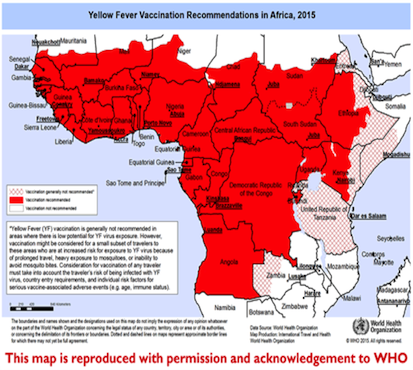DISEASES
- Cholera: Spread through consumption of contaminated water and food. More common during floods and after natural disasters, in areas with very poor sanitation and lack of clean drinking water. It would be unusual for travellers to contract cholera if they take basic precautions with food and water and maintain a good standard of hygiene.
- Diphtheria: Spread person to person through respiratory droplets. Risk is higher if mixing with locals in poor, overcrowded living conditions.
- Hepatitis A: Spread through consuming contaminated food and water or person to person through the faecal-oral route. Risk is higher where personal hygiene and sanitation are poor.
- Hepatitis B: Spread through infected blood and blood products, contaminated needles and medical instruments and sexual intercourse. Risk is higher for those at occupational risk, long stays or frequent travel, children (exposed through cuts and scratches) and individuals who may need, or request, surgical procedures abroad.
- Meningococcal Meningitis: Spread by droplet infection through close person to person contact. Meningococcal disease is found worldwide but epidemics may occur within this country, particularly during the dry season. Risk is higher for those mixing with locals for extended periods.
- Poliomyelitis: Spread person to person through the faecal-oral route and by consuming contaminated food and water. A total of 5 doses of polio vaccine are recommended for life in the UK. Boosters are usually recommended for countries where polio remains a problem.
- Rabies: Spread through the saliva of an infected animal, usually through a bite, scratch or lick on broken skin. Particularly dogs and related species, but also bats. Risk is higher for children, and for those going to remote areas (who may not be able to promptly access appropriate treatment in the event of a bite), long stays, those at higher risk of contact with animals and bats. Even when pre-exposure vaccine has been received, urgent medical advice should be sought after any animal or bat bite.
- Tetanus: Spread through contamination of cuts, burns and wounds with tetanus spores. Spores are found in soil worldwide. A total of 5 doses of tetanus vaccine are recommended for life in the UK. Boosters are usually recommended in a country or situation where the correct treatment of an injury may not be readily available.
- Typhoid: Spread mainly through consumption of contaminated food and drink. Risk is higher where access to adequate sanitation and safe water is limited.
- Yellow Fever: Spread by the bite of an infected, day-biting mosquito. The disease is mainly found in rural areas but outbreaks in urban areas do occur. Vaccination is usually recommended for those who travel into risk areas. View yellow fever risk areas here. Some travellers may require vaccination for certificate purposes.
- Tick-borne Encephalitis: Spread mainly through the bite of an infected tick. Risk is higher during the warmer months, for those exposed outside in forests, woods, and grassy areas (eg forestry workers, campers, hikers).
- Japanese Encephalitis: Spread through the bite of an infected mosquito. This mosquito breeds in rice paddies and mainly bites between dusk and dawn. Risk is higher for long stay travellers to rural areas, particularly if unable to avoid mosquito bites.
OTHER NON VACCINE-PREVENTABLE DISEASES
Dengue Fever
A viral illness that is
transmitted to humans by mosquito bites. The mosquito that spreads dengue bites
during the day and is more common in urban areas. Symptoms include fever,
headache, severe joint, bone and muscular pain - hence its other name
'breakbone fever'. There is no vaccine and prevention is through avoidance of
mosquito bites.
Schistosomiasis
A parasitic infection (also known as bilharzia) that is transmitted to humans through contact with fresh water. The parasite enters humans through the skin and prevention is dependent on avoidance of swimming, bathing or paddling in fresh water lakes and streams.
Yellow Fever Risk Areas
These are areas where the virus is present in monkeys and is a potential risk to humans as defined by the World Health Organisation. Some of these countries demand a yellow fever certificate from travellers as a condition of entry to their country. Many of these, and other countries, will ask you for a certificate if you are entering from an infected country. Your travel agent should inform you if you need a certificate when you are booking your holiday or flight. You can double check if in doubt with your local yellow fever vaccination centre.
Areas with Risk of Yellow Fever Transmission.
The following maps show the approximate areas which have a risk of yellow fever transmission.
